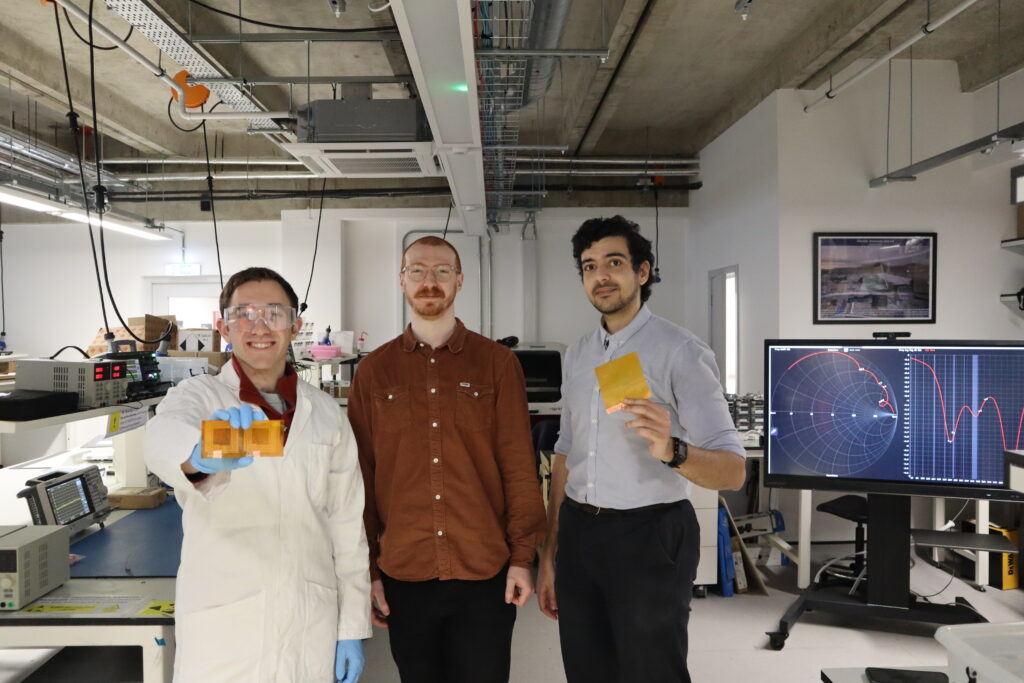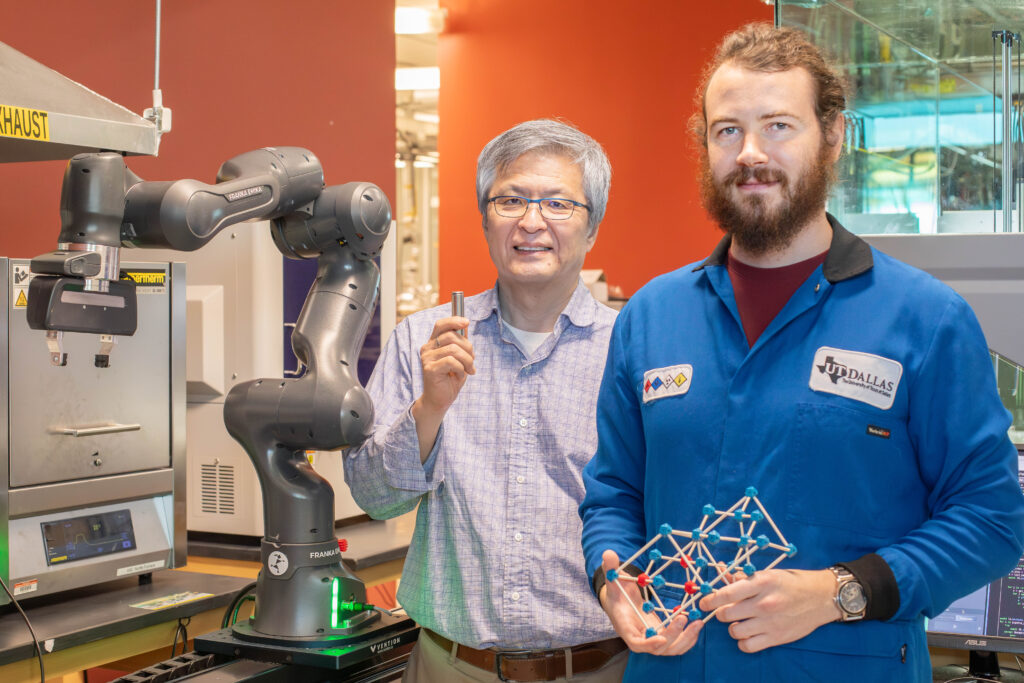Follow Dr. Matthew M. Montemore from Tulane University on LinkedIn or explore more of his research and that of his collaborators here, which forms the basis of this interview.
A link to the specific paper our earlier news report and this interview pertains to can be found here:
Jalil, A., Happel, E. E., Cramer, L., Hunt, A., Hoffman, A. S., Waluyo, I., Montemore, M. M., Christopher, P., & Sykes, E. C. H. (2025). Nickel promotes selective ethylene epoxidation on silver. Science, 387(6736), 869–873. https://doi.org/10.1126/science.adt1213
In a recent study, Dr. Matthew Montemore and his colleagues have developed a promising new approach to ethylene oxide production; one that could significantly reduce reliance on chlorine-based promoters and lower CO₂ emissions. By alloying nickel into silver catalysts, their method not only opens the door to a chlorine-free process but also holds potential for improved selectivity and efficiency in one of the most energy-intensive chemical reactions in industry.
As part of our continuing coverage of this research, we spoke with Dr. Montemore to dive deeper into the science, challenges, and future implications of this work.
The following interview is presented unedited to preserve Dr. Montemore’s original responses and provide a clear, firsthand view of his contributions to advancing sustainable industrial chemistry.
Acknowledgments from Dr. Montemore: A.J. and P.C. acknowledge primary financial support from the US Department of Energy, BES, Catalysis Science program under contract DE-SC0021124. E.E.H., L.C., and E.C.H.S. acknowledge primary financial support from the US Department of Energy, BES, CPIMS program under contract DESC0004738. M.M.M. acknowledges support from Tulane University and the National Science Foundation through grant CHE-2154952.
Could you explain the core mechanism behind your new method for ethylene oxide production and how it differs from traditional processes that rely on chlorine?
The traditional process for producing ethylene oxide uses a complex and highly promoted silver-based catalyst. In particular, co-feeding a chlorine-containing molecule is a crucial aspect of current industrial practice as it dramatically improves the selectivity. We found that we could achieve similar selectivity as a chlorine-promoted catalyst by instead alloying nickel into the silver. This may open the door to a chlorine-free process. However, we also found that chlorine further improves the selectivity of our nickel-silver catalyst, so it is also possible that leveraging nickel in addition to chlorine and potentially other promoters will allow improvements in selectivity beyond current practice. Either outcome would be highly desirable, with potential for enormous energy and environmental benefits due to the large scale of ethylene epoxidation.
How does your approach reduce CO₂ emissions, and what impact could this have on the overall carbon footprint of ethylene oxide production at an industrial scale?
The most important factor in improving the efficiency of ethylene epoxidation is the selectivity. That is, engineers want to reduce the fraction of ethylene that is combusted in the reactor, which is challenging as combustion is more thermodynamically favored than formation of ethylene oxide. Our approach has the potential to improve the selectivity, particularly with additional fine-tuning of the catalyst material. This could reduce CO₂ emissions in multiple, related ways. First, the amount of CO₂ produced in the reactor from ethylene combustion could be reduced. Second, the amount of heat needed per mole of ethylene oxide produced could be reduced. Finally, the amount of separations and the size of recycle streams could be reduced. All of these would lead to decreased CO₂ emissions.
Because ethylene oxide production generates such large amounts of CO₂, even small percentage reductions could be significant. A 1% reduction would be nearly 400 kilotons of CO₂ per year, which is almost 100,000 times what a typical passenger vehicle emits in a year, according to the EPA.
How was the catalyst formulation designed or optimised to improve performance?
We began with a very simple design principle: we wanted to find a material that could easily break the O-O bond in O2 and yet would bind the resulting O atoms relatively weakly. We screened a number of so-called single-atom alloys, consisting of a majority host metal with single, isolated atoms of a second metal doped into the surface. Since silver is the best pure metal for ethylene epoxidation, we chose silver as the host and screened many other metals to dope into the silver. These calculations were performed by Matt Montemore at Tulane University. Nickel emerged as promising based on our design principle.
Next, Laura Cramer and Elizabeth Happel at Tufts University performed experiments on model, single-crystal nickel-silver surfaces under the supervision of Prof. Charlie Sykes. They characterized these surfaces using multiple techniques, which allowed them to study their interaction with oxygen and directly image the surface at the atomic scale.
The model studies suggested that most or all of the nickel would be at the surface under reaction conditions; therefore, we were able to estimate the amount of nickel needed to achieve a reasonable nickel surface coverage based on the metal nanoparticle size. Based on this estimate, we performed empirical testing of a few different nickel loadings to find that a 1:200 Ni ratio performed best.
What were the main technical challenges your team faced when developing this chlorine-free process, and how did you overcome them?
The largest technical hurdle turned out to be finding an effective and reproducible synthesis procedure for the nickel-silver nanoparticles. Nickel and silver do not mix well, and finding an effective way to alloy them while still creating reasonably sized nanoparticles on the desired support was very challenging. Anika Jalil and Prof. Phil Christopher at UC Santa Barbara put a huge amount of effort into this, trying multiple approaches based on previous synthetic protocols for nanoparticles.
How scalable is this new production method for commercial use, and what factors will influence its adoption in the chemical manufacturing industry?
Two big questions relating to scalability and commercialization are the long-term stability and the development of a highly scalable synthesis technique. Additionally, the selectivity that is achievable by fine-tuning the support, particle size, nickel:silver ratio, and other promoters could affect adoption in industry. At this point, we don’t foresee any specific major issues that would prevent commercialization, but scaling up materials and processes often brings up unforeseen issues.
Could this approach be adapted to improve the sustainability of other large-scale chemical production processes beyond ethylene oxide?
We think the broad approach of using single-atom alloys for oxidation could potentially be effective for other reactions. We have performed a few simple calculations and model tests for other oxidation reactions and seen some promise, but further testing is needed.
Looking ahead, what are the next research priorities for your team, and are there collaborations underway with industry partners to accelerate commercialisation of this technology?
Currently, our research in this area is focused on understanding the function of our catalyst in more detail. Catalysts are inherently difficult to study, as an atomic-scale picture of reactions at high temperatures and pressures is hard to achieve. Furthermore, existing catalysts for ethylene epoxidation are not well understood, even for the simpler case of silver catalysts without promoters. We hope that the insights we gain into our nickel-silver catalysts will also shed some light onto silver catalysts.
We are interested in working with an industrial partner on this and have had discussions with potential partners.

Hassan graduated with a Master’s degree in Chemical Engineering from the University of Chester (UK). He currently works as a design engineering consultant for one of the largest engineering firms in the world along with being an associate member of the Institute of Chemical Engineers (IChemE).



